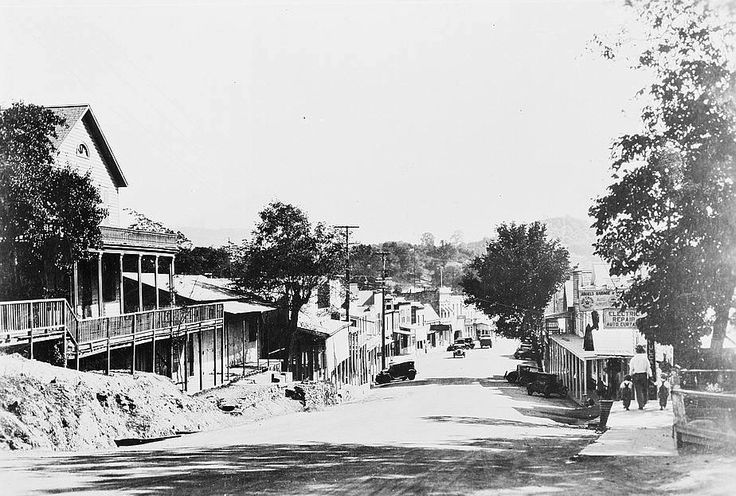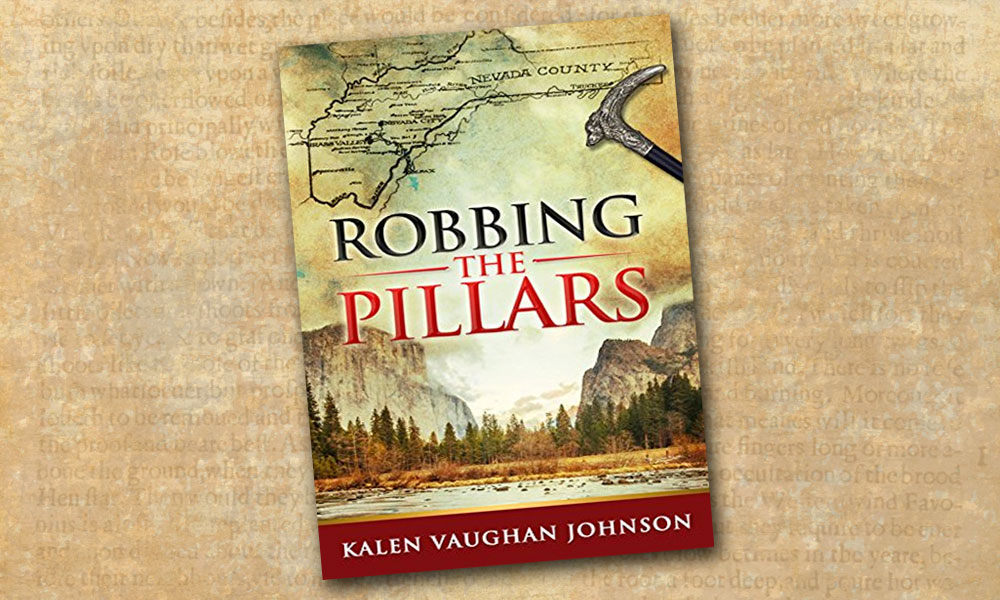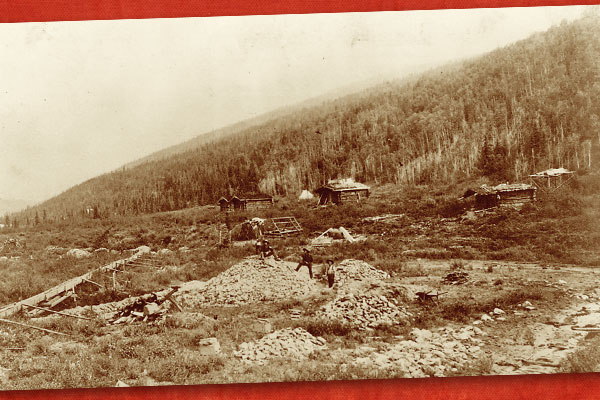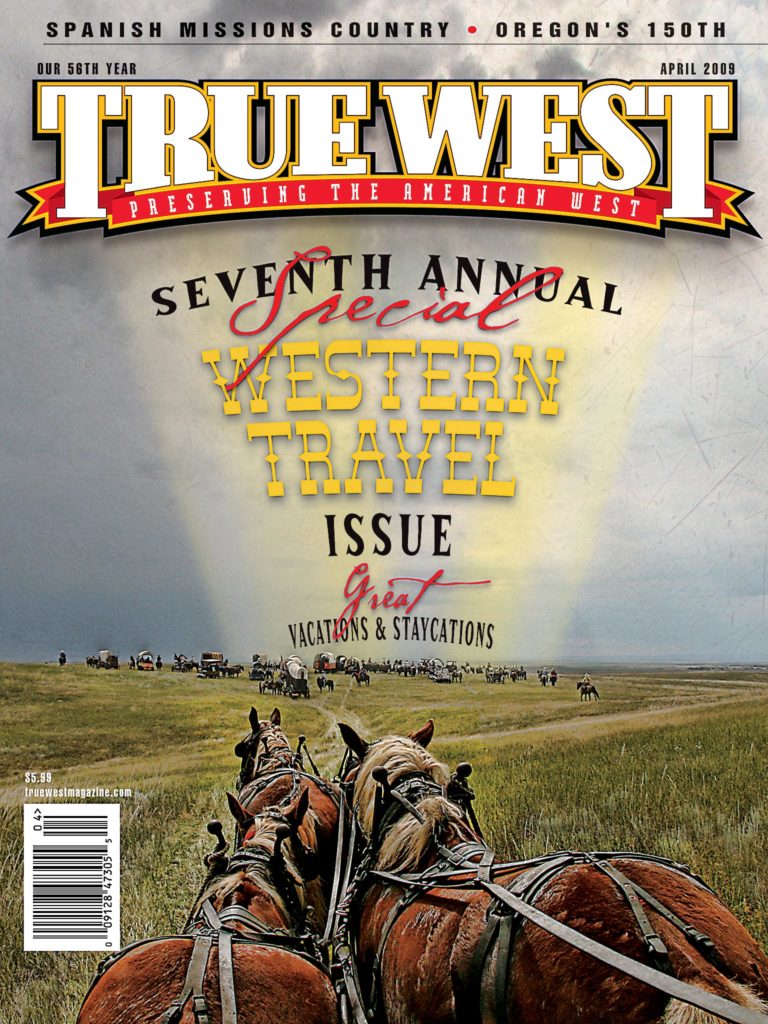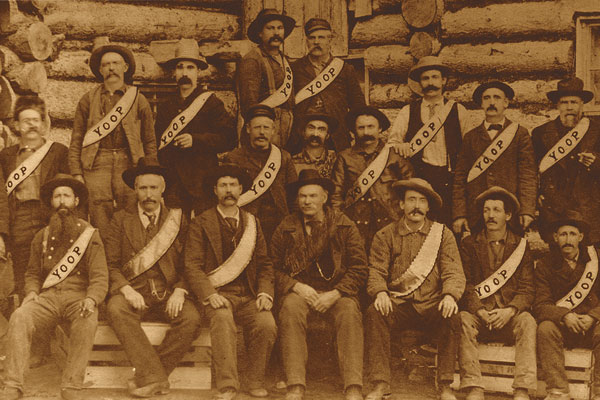
He said his name was Tommy. In his 60s, he had driven his compact pickup truck from Mississippi all the way to Alaska.
Arriving in Homer, he spent nearly $1,000 having the vehicle transported by the ocean ferry Tustumena for Popof Island, nearly 300 miles west of Kodiak.
Popof can be one of Alaska’s most stunning vistas with its emerald grasslands and powerful mountain backdrops. But, not today. Aleutian-style weather had set it.
It was late May, and I was amused that I could see my breath as horizontal rain dug deep into my face and clothes. Only my long johns kept me dry.
Tommy was oblivious to the weather or anything else. With the musical draw that defines a Southern accent, he showed me his equipment he had just lugged down from the cliff above. He had set up a sluice operation along a lonely beach just a few hundred feet from the edge of a runway serving as the town of Sand Point’s airport.
Through the pounding rain, I could make out the outline of nearby Unga Island across the narrows. In those rolling hills, the fabled Apollo Gold Mine once operated from 1894 to 1908.
One does not think of the Aleutians when it comes to gold. Yet the Apollo was one of Alaska’s most profitable gold mines. The Unga Mining District produced more than 112,000 ounces of the precious metal.
I had already met two men with diving equipment a few days earlier in the fishing village of King Cove even farther west. Their plan was to hunt for gold deposits at the shorelines of surrounding islands.
Tommy had that same glazed look in his eyes that I had seen in theirs. He had the fever. With gold hovering from $900 to $1,000 an ounce, I encountered that look over and over during my months in Alaska.
Spectacles like gold rushes are not a thing of the past in Alaska. A quiet gold rush today is sweeping through this vast and still nearly empty subcontinent.
Alaska’s Gold Heritage
More than 200 Alaskan families earn their income from gold mining today. The historical mining districts buzz with brush being cleared and dirt shoveled. Suction dredges skirt isolated Alaskan streams.
In 2007 alone, Alaska’s 210 placer claims produced more than 70,000 ounces of gold. In the last decade, 310 federal and 45,015 state mining claims have been filed in a state populated by 600,000 people.
Alaska has active gold claims in 59 of its 69 mining districts. Districts such as Fairbanks, Cape Nome, Circle, Council-Solomon, Iditarod, Willow Creek and Juneau all have had from one to seven million ounces of gold taken out since 1880.
The largest gold deposit ever discovered in North America took place in March 2002 when a deposit a mile and a half long and a mile wide with a thickness of 1,500 feet was found near remote Iliamna Lake in Southwest Alaska.
One reason for Alaska’s vast mineral wealth is geologic; the land is a crazy quilt of 22 tectonic plates that have collided against each other over time. The only section of Alaska that is part of the North American Plate is a tiny beak-shaped region around the small town of Chicken and the Fortymile Mining District.
When the Russians owned Alaska, they mined gold on Kodiak Island, but it was simply too easy back then to earn the same amount from selling fur pelts.
Americans first found gold just outside of the Russian-Alaskan capital of Sitka in 1871. The Tlingits had Sitka under virtual siege then, but mining engineer George Pilz made Silver Bay a producing mine. When it played out, Pilz sent out teams across the islands of Southeast Alaska to find fresh gold deposits. His team of Richard Harris and Joe Juneau discovered gold along Gastineau Channel in 1880.
Alaska’s first true gold rush turned raw camps like Juneau and Douglas into towns. John Treadwell arrived in 1881, purchasing a claim near Douglas for $264. The Treadwell Mine produced $24 million in gold until April 1917 when its roof collapsed and the sea rushed in, driving the mine shafts beneath the channel.
Fortymile District
“Sourdough” originally referred to the men of the Alaska Interior. Never numbering more than 2,000, these men were different than the miners along coastal Alaska. Joe Juneau and others were miners by profession who left Alaska as soon as they struck it rich. The Sourdoughs knew nothing about gold mining. Personal reasons drove them north while the rest of America was moving west. Few left after striking it rich. Those who did returned.
Three men shaped this unique Sourdough society: Jack McQuesten, Al Mayo and Arthur Harper. In 1873, each one entered the Interior by a different route and was shocked when they ran into each other on the banks of the Yukon River. Each had thought he was the only white man in the area. They were not entirely off base. They were the only three whites for the first thousand miles of the river. For 15 years, the trio tested sandbars, explored valleys and dug into river banks.
By the 1880s, these three men had lost their gold fever. Other prospectors making their way over the ice-draped Coastal Range stumbled to the Yukon, half starved and in rags, finding McQuesten, Mayo and Harper waiting either with a helping hand or with trading post supplies. Every new Sourdough found unlimited credit in these posts. The three men also taught these greenhorns how to survive minus-50 degree winters and mosquito-infested summers.
Not far from one of the trading posts, 25 miles upstream on the Fortymile River, Howard Franklin struck gold in September 1886. The Fortymile Gold Rush drew all the Sourdoughs into the area. Small towns sprung up with names like Chicken, Franklin, Jack Wade, Steele and the largest, Fortymile, where Harper opened a general store and a saloon employing the Interior’s first bartender, the legendary Bill McPhee.
Fortymile has produced more than a half million ounces of gold and is still growing. From the town of Chicken to the Yukon River along the Taylor Highway, this remains the most active small claims region in Alaska today.
Circle and Hope Districts
McQuesten eventually tried his luck downstream. He chose a site halfway between Fortymile and Fort Yukon, an illegal British fort deep in U.S. territory, naming it Circle, after the Arctic Circle.
Big Jack grubstaked every Sourdough who traded through his post. One of them, Frank Dinsmore, worked so often in the region that Sourdoughs dubbed a massive peak Dinsmore’s Peak, in his honor. Two others, Pitka Pavaloff and Sergei Cheosky, struck gold along nearby Birch Creek in 1893. The rush was on. Within three years, Circle had a population of 700 as well as an opera house and 28 saloons.
The Circle Mining District has been active ever since, producing more than a million ounces of gold and climbing; all from small family claims. Most of the dirt-and-gravel Steese Highway running northeast out of Fairbanks is in the district with miners’ cabins dotting the roadside.
Inland from Circle, other towns popped up as supply points. Central is the only one surviving today. Central possesses something other mining districts do not have—diamonds! First discovered in the area by Jim Regan in 1984, Frank and Mary Warren began pulling diamonds out of their sluice box in the 1990s. Today, four one-man commercial diamond claims are found in the Central area.
The fourth gold rush, before the massive Klondike Rush, took place in 1895 along Turnagain Arm fjord on the south side of modern Anchorage. Five men working Sixmile Creek along the northern edge of the Kenai Peninsula pulled out more than $40,000 in a few weeks. This was the first rush that attracted large numbers of Americans, besides just the Sourdoughs. The green meadow valleys were soon choked with boomtowns. Sunrise was the largest with 5,000 people, followed by Hope with 3,000. Joe Girdwood found gold on the north side of Turnagain Arm in 1896. That same year, William Dickey walked into a Hope saloon with the first professional map of Dinsmore’s Peak. He had renamed the mountain after William McKinley.
From Turnagain Arm, prospectors followed trails east into Prince William Sound where they worked seasonal gold mines that they kept secret from the stampeders disembarking at Valdez. For the first time, prospectors encountered gold promoters—conmen, who, for a price, led parties to supposed goldfields. Homer Peacock was one such promoter landing would-be millionaires on a five-mile spit on the Kenai’s southern tip and abandoning them. Thus Homer, Alaska, was born.
The Hope District has produced more than 130,000 ounces of gold and climbing. Prince William Sound has produced 137,000 ounces of gold. In 1997, Girdwood resident and artist Andy Hehnlin found a gold vein less than a mile from the Seward Highway assaying out at $500,000. Since then, deposits of platinum have also been found in the Girdwood area.
Bring On the Klondike Rush
Then came the three gold rushes that made Alaska and the Yukon mythical. Robert Henderson and George Carmack, grubstaked by Harper, found gold along the tributaries of the Klondike River in the Yukon in August 1896.
Of the 100,000 who headed for the Klondike, 35,000 made it. Out of that number, some 4,000 actually found gold and 200 found enough to be called rich. The Klondike Gold Rush was both Bill McPhee and Al Mayo’s finest hour. McPhee not only grubstaked many of the future millionaires, including one of his bartenders, Clarence Berry, but he closed his saloon in Dawson, while the others operated around the clock, in order to provide a free place to sleep for those fate had left destitute.
Mayo had opened a small trading post in Rampart after John Minook found some gold in the area. When Wyatt Earp and his wife Josie, Tex Rickard (who would later build the third Madison Square Garden) and novelist Rex Beach got trapped by ice trying to get to the Klondike diggings, Mayo rescued them and provided for them during that harsh winter of ’98. Mayo reigned over Rampart until his death in 1927.
No sooner had gold seekers arrived in the Klondike than three Swedes—Eric Lindblom, Jafet Lindeberg, John Brynteson—found gold on Anvil Creek. Stampeders began rushing in off the Yukon River Trail to Cape Nome when an astonishing discovery was made in the summer of 1899; the beaches contained vast amounts of gold mixed in the sands!
A mining district quickly formed, defining a gold claim on the beach being as far as a man could reach with a shovel within a 360-degree radius from where he stood. Wyatt Earp, John Clum (editor of the Tombstone Epitaph), Rex Beach and Tex Rickard arrived shortly afterwards. Other towns sprung up with gold inland from the beach such as Council City, Solomon and Candle, but nothing like Nome, which had 25,000 residents by 1905.
The Cape Nome District produced nearly five million ounces of gold, while neighboring Solomon District held a million ounces. Gold mining is still active in Nome, though on a commercial basis. The beaches have been plucked clean, save for the silver dollars the miners had lined their sluice boxes with and then discarded.
Coldfoot to Fairbanks
In the midst of these famous gold rushes, a small but significant gold rush took place in the Brooks Mountains near Alaska’s North Slope. Gold found in 1899 along Slate Creek created the settlement Slate Creek City. Then winter came, and temperatures plunged to a constant minus 60. Residents soon renamed their town Coldfoot as the less hardy headed south. Coldfoot stayed a boomtown for an impressive six years. Then gold deposits found farther north drove settlers into the town of Wiseman.
Remote for more than a century, when oil was found on the North Slope, both communities are right by a supply road—today’s Dalton Highway. The Koyukok-Nolan Mining District has produced more than 300,000 ounces of gold. But the boom days are over. Today, Wiseman has 12 male and nine female residents.
Three years went by before another gold strike—one of the largest in Alaska and the most accessible. Southwest of the Circle District, Felix Pedro was prospecting along a few streams near the Tanana River. He had been grubstaked by Frank Cleary, whose brother-in-law E.T. Barnette operated the trading post Chena along the river. In 1902, Pedro struck gold. Barnette began promoting the area as the next gold bonanza. Barnette was in for a shock when strikes were actually made along Cleary and Ester Creeks, besides what Pedro had found along Fairbanks Creek.
Not only has the Fairbanks District produced more than eight million ounces of gold, but Fairbanks itself sits at the heart of a multitude of easy-to-reach claims and ghost towns forming nearly a circle around Alaska’s second largest city. The state’s largest gold mine, Fort Knox, has milled 15 million tons of rock, producing more than 362,000 ounces of gold. Estimated ounces of gold not yet tapped number 963,000.
The Fairbanks Gold Rush, taking in Fairbanks, Ester, Fox, Livengood, Cleary, Olnes and Chatanika, was by far the most profitable Alaskan gold rush. From 1902 to 1914, the value of gold came to $63 million.
Gold Rush Ends at Poorman Road?
Hollywood and novels would have one believe Fairbanks marked the end of the Alaska gold rushes, but nothing could be further from the truth.
Downstream from Fairbanks, by several hundred miles, gold was found along Ruby Creek in 1907. In many ways, the Ruby-Poorman Gold Rush has all the elements of a great movie.
All of Alaska’s gold rushes had a signature of their own. The Ruby-Poorman’s signature is that it still has not ended. Once one creek plays out; another creek proves to have profitable placer deposits. Some 30 miles farther inland from Ruby Creek, gold was found along Long Creek in 1910. Just as it was beginning to play out, gold was found farther inland along Poorman Creek in 1912. There, a pay streak two-and-a-half miles long and a thousand-feet wide was found. As that site began playing out, gold struck at Swift Creek in 1914, then Moose Creek in 1920.
Once it became obvious gold was not a short-time producer, the town of Ruby came into being. In 1911, it had a population of 3,000 acting as a supply point for the numerous claims along the nearly 100-mile Poorman Road.
World War I struck Ruby almost a death blow in a tragic, indirect way. Miners and the sons of miners enlisted. Wanting to give their loved ones a proper send off, entire families decided to travel with these patriots south to Seattle. They boarded the SS Princess Sophia at Skagway, which struck Vanderbilt Reef. The crew and 366 passengers went down with the ship on October 27, 1918.
Ruby never fully recovered. Even gold could not cure the loss to the heart and homesickness. Many just abandoned their claims and drifted south out of Alaska.
Mines, though, continued to be active up and down Poorman Road into the 1990s. In 1998, along Swift Creek, Barry Clay discovered the largest gold nugget ever found in Alaska, weighing in at 294.10 troy ounces. To date, the district has produced close to 500,000 ounces of gold. But since 2005, Clay has been the only active miner in the Ruby-Poorman region, working a claim staked by his grandfather.
Mining For Booze and Food
A year before the find at Ruby, in September 1906, Robert Hatcher discovered a quartz-bearing gold vein near the top of Skyscraper Peak, north of present-day Anchorage.
Hatcher was a new type of prospector for Alaska. He and others roamed Alaska finding and staking gold claims, and then selling them to miners for drinking and eating money. At first Hatcher’s find proved difficult to sell because lode ore was expensive to mine. It required tunneling and a stamp mill for processing the ore out of the quartz. Finally, in 1908, the first lode mill opened in the Willow Creek Mining District, and the rush was on.
The Talkeetna Mountains are a circular formation; the result of a magma bubble rising to the surface of the planet and cooling. The alpine valleys along the Talkeetnas’ south flank were soon pockmarked with mines: Warbonnet, Lucky Shot, Fern, Archangel and Eldorado.
In 1938, Alaska Free Gold Mine and the Alaska Pacific merged in Independence Valley into a massive mining complex covering 1,350 acres with 27 buildings, family housing and 12 miles of underground tunnels employing some 200 miners. It became one of the most successful hard rock mines in Alaska.
When the War Production Board ordered a halt to all gold mining in the U.S. in 1942, the Independence Mine received a waiver; miners had found schellite containing tungsten vital to the war effort. Yet the mine continued to produce vast quantities of gold, while only a few bags of schellite were kept in a storage shed. A government inspector came in 1943, wondering why no schellite was being shipped out, and finding out why, he closed down the operation.
Though much of the region today is within a state land management area, panning is allowed and a few individual claims are open. Independence Mine itself is now a beautifully preserved state park.
The Willow Creek District has produced more than 667,000 ounces from hard rock and 60,000 in placer gold.
Platinum Rush
The last significant gold rush in Alaska until today took place in Iditarod country. John Beaton and Bill Dikeman found gold on Otter Creek in Christmas 1908. This was wild country, on the southwest flanks of the Kuskokwim Mountains in Western Alaska, so it took a while for word to get out. By 1910, Peter Miscovich began mining operations at Flat. Within four years, the settlement had 6,000 residents.
Gold was hauled out of the Flat region in winter by way of dog sleds, along a trail to the seaport of Seward that came to be known as the Iditarod Trail—a trail leading north from the town of Iditaord connected with Nome. (The world famous Iditarod Race covers this trail.) At first, dog teams and riverboats serviced the Iditarod Gold Rush. But it soon became serviced by bush pilots risking their lives in barely air-worthy craft hauling equipment into remote sites.
In the late 1920s, Andrew Olsen left the Iditarod, finding large quantities of platinum around Goodnews Bay to the west. He touched off a platinum rush into Goodnews. Reporter Ernie Pyle covered the rush. Olsen controlled nearly all of the nation’s platinum production by 1938, with 650,000 ounces coming from the claims.
More than a million-and-a-half ounces of gold came out of the Iditarod District, while neighboring districts saw more than a half-million ounces in gold. Today, though, Flat has a total population of four.
Gold Cord: The Next Stampede?
Four weeks after talking to Tommy on the beaches of Sand Point, I was in the Talkeetna Mountains. Dan Renshaw now owns the Gold Cord. Having worked as a tourist guide for a number of years at Independence Mine, I wanted to conclude my visit to this new Alaska gold rush in these mountains.
I was setting up my tent when Alaska State Park Ranger Kym Miller came by, saying she had gained permission for me to spend the night in the bunkhouse at Gold Cord. Thirty minutes later, I was struggling through knee-deep snow in mid-June with a 45-pound backpack, going up 800 feet from Independence to Gold Cord.
I was worn down to the bone by the time I knocked on the bunkhouse door. Twilight was setting in, as was the cold. Miner Hugo Haase, a little surprised to find someone knocking at this time of night, let me in. I stayed up late talking with him and his sons about the current gold fever. They shared their frustrations with federal regulations that they believed were impeding what could be profitable gold prospecting.
Dawn came early. We rode on snow machines farther up the mountain to the mine entrance, then rode on a narrow gauge rail out of a work shed down 450 feet into the mountain.
“What we are trying to do is locate the mother lode that pinched off when they were doing Independence that you were at,” Haase shouted over the roar of pumps.
The temperature in the mine is a constant 34 degrees with cold water dripping from the overhanging rock. His two sons were wrestling with a massive bit drill. Haase’s theory now was that they had tunneled under the mother lode. His sons were drilling blasting points into the overhang. Later, they would use explosives to see if Haase’s theory was right. Waste rock would be hauled out by a small train.
“We have lost so much of what we used to know,” Haase said over the sound of the drilling. “We could not find a donkey train engine so the train we are using is using a converted lawnmower engine I bought in town.”
His youngest, a daughter, ran to make sure the water hose feeding the drill was not knotting up.
“How much is Dan paying you?” I asked, believing, whatever it was, it was not enough. Haase and his children spend a full day of hard labor every day in the cold mine shaft.
“We’ve been doing this free for the last couple of summers,” Haase answered for her. “It is great. And it teaches my kids so many things about life.”
I stared hard through his protective goggles, to look into his eyes.
In 1895, 20 Sourdoughs met at Fortymile to have their photograph taken after forming the Yukon Order of Pioneers. In that photo can be found McQuesten, Mayo and McPhee. Their cragged faces are aglow as they stared out across time with a strange twinkle in their eye as if they held a common secret.
It was the same look Tommy had standing in the wind at Sand Point, and it was the same look Haase now had, 450 feet deep inside this mountain.


